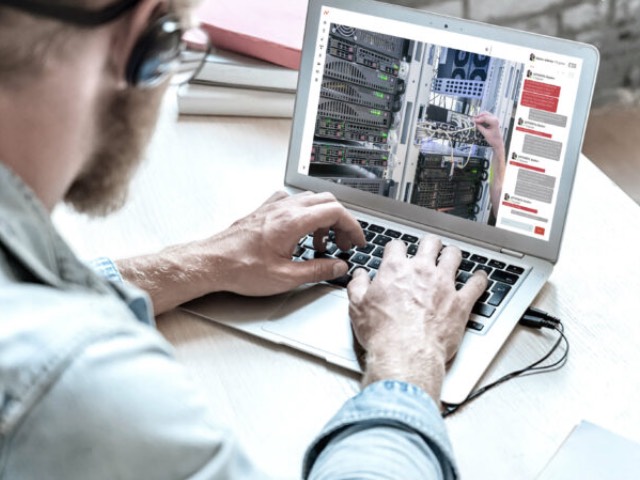In a world where the pandemic has led to increased remote working, new tools and virtual technologies are supporting vital operations, writes Alexandre de Luca, President, Enterprise, Marlink
The last 12 months have demonstrated to millions of ordinary workers that remote working is practical and possible. This transition has also placed pressure on companies to maintain business continuity while depending on reliable connectivity and network services regardless of their location.
While it might be true to say that ‘we’re all remote workers now’, some are more remote – and more precarious – than others. Energy and mining personnel, IGO and NGO staff alike have always operated on the front line. Even once the current crisis has been brought under control, they will still need to be supported remotely with the collaborative tools and training, applications, and data they need.
EMERGING INTEREST
Remote access is an idea whose time has come. We have begun to fully comprehend the importance of delivering online collaboration platforms, network upgrades and updates, IoT monitoring and compliance alongside more advanced solutions like telemedicine as a supplement to voice and data communications.
Regardless of the pace of adoption, the direction is set; Marlink has identified five key Remote Technologies that will have an ongoing impact on satellite users.
FIVE REMOTE TECHNOLOGIES
In an era of remote working, organisations rely ever more on their employees and many have come to understand that their people can work safely at local production plants or remote operating sites in a way that minimises risk and increases efficiency. For this reason, Remote Monitoring and Security is seeing continued growth among enterprise satellite users. Whether for bio-monitoring of workers or CCTV monitoring of operations, end-to-end hybrid connectivity solutions enable company security officers to be where their assets are, employ drones and IoT sensors to report around the clock.
Even remote users are subject to regulation and demand for Remote Compliance as a means of managing field engineering has grown rapidly. In the energy sector in particular, smaller workforces need more support ensuring that high standards are met.
With increased restrictions on travel, use of remote survey for compliance with regulatory standards has boomed. Increased data collection supports remote inspections by surveyors who can leverage video provided by local workers or drones that can access spaces not safe for human entry.
While office-based workers would once have dreaded video link-ups with remote sites, Remote Collaboration tools have been the obvious dividend of the last 12 months. Allowing workers not just to see and hear each other but chat, share data and files has enabled many to stay in business.
This has raised multiple challenges around IT security, connectivity, bandwidth and cloud access to corporate applications from the home space. Corporate IT ecosystems quickly became a network of networks dealing with multiple vendors of hardware and software with variable service capabilities, creating considerable added complexity.

The pressure of demand for uptime has also seen enterprise satellite users embrace Remote IT and Network Management as a way to optimise their resources and obtain the best performance from their networks. For some segments, including humanitarian focussed NGOs or administrations, network maintenance has long been an issue. The opportunity to use software-defined technologies to take control, centrally, of the edge hardware at the remote sites can reduce the need for physical IT installations, local software updates and configuration changes. Network solutions providers can deliver the right connectivity mix and manage IT and network infrastructure as a service.
Remote workers around the world rely on their local team and wider organisation for medical attention and increasingly to support their mental health, particularly where tours and contracts have been extended in the last year. Remote Medicine, is an application whose benefits have been known and understood for a decade or more.
Telemedicine shares the same undeniable logic of other remote technologies; increasing visibility, improving communication and enabling decisions based on data. Better data means faster diagnosis and less reliance on local staff to make decisions. Having an accurate diagnosis of COVID-19 or any other condition based on real time data via a live video consultation between patient and remote doctor means more efficient handling of medical emergencies, faster decision-making and most appropriate treatment.
A CHANGE IN MINDSET
Remote working, whether by local employees or staff connecting from home, may have been enforced on a majority of the world’s population but what we have seen over the last 12 months is that mindsets have changed for good.
In fact, the pandemic catalysed the use of new technology and created two streams for future innovation; a willingness to adopt remote processes in sectors that prioritised human intervention and an acceptance that staff can work from anywhere as the new normal.
Both streams are paradigm shifts that also provide a glimpse of what the next stage of technology evolution might look like; smarter, safer, more connected, and efficient – with value at the centre of the process.
The key to all of the new remote technologies is to learn the lesson the pandemic has taught us; we can embrace new ways of working but will also continue to depend on people. With more services outsourced to the specialists, enterprise users can focus on their mission and leave the connectivity to the experts.
Link to the full article on Satellite Evolution
Source: Satellite Evolution – Contribution from Alexandre de Luca, President, Enterprise, Marlink






































